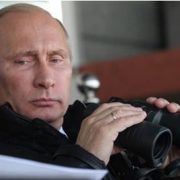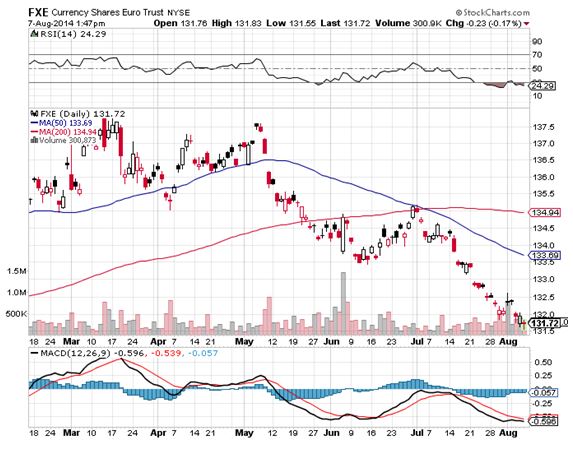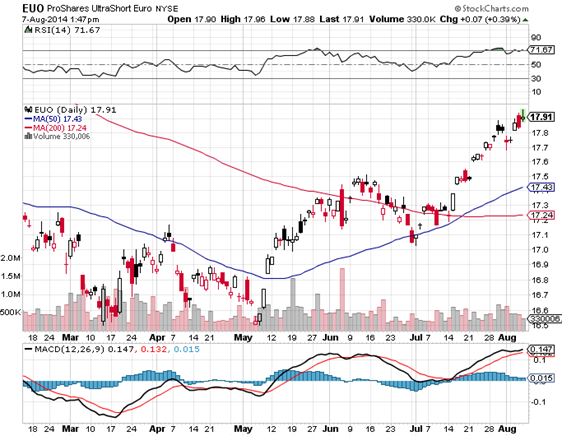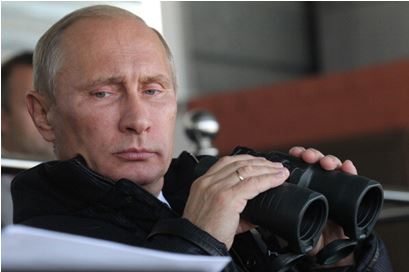The entire foreign exchange world has been on hold this week, waiting for ECB president Mario Draghi to announce a well-deserved cut in Euro (FXE), (EUO) interest rates.
The sanctions war with Russia is escalating by the day. Russia banned food imports from the US and Europe, a mere $1 billion trade hickey for us, but a $15 billion punch to the gut for the continentals. Some 350 McDonald franchises in Russia will be left with nothing to serve. Yikes!
Economists are paring expectations for European GDP growth for this year as fast as they can.
Italy announced a shocking dive in Q2 growth, and German data is deteriorating by the day, where some 300,000 jobs are dependent on trade with Russia.
The European bond market has certainly gotten the message. The yield on ten-year German bunds hit another all time low at a gob smacking 1.02%, while the return on two year paper fell below zero!
Throwing more fat on the Euro fire were the latest American weekly jobless claims, plunging by 14,000 to a new seven year low of 289,000. This augers for high US interest rates sooner, which is hugely dollar positive and Euro negative.
So given all this, Draghi?s announcement that there would be no interest rate cut whatsoever went over like a lead balloon. You would have expected the Euro to rocket a few cents on this news, thanks to the further yield support.
It didn?t, not even for a second.
Instead, another round of frustrated short sellers hit the market big time, who had been waiting for better prices at which to sell. I was one of those.
With the rapidly deteriorating fundamentals, selling short the Euro has become this year?s one way, ?free money? trade. It is a classic trading nostrum that if you throw good news on an asset and it fails to rally, you sell the hell out of it.
I will reiterate my long time targets for the beleaguered continental currency of $1.27, then $1.18, and possibly as low at $1.00. How quickly will we get to these low numbers?
Just ask Vladimir Putin.











